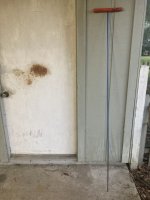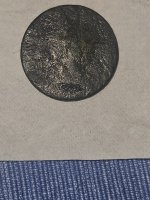treasure_hunter_1
Greenie
- Dec 14, 2023
- 19
- 56
Hello, my name is Tommy, and I would like to know about more ways to find bottles. Since I dabbled in the hobby this year, I do not have much experience yet. I mostly metal detect, and that is how I found bottles, in two locations. At a 1980s house, which had a large shed likely dating back to the late 1800s due to the square nails and Indian head cents I had found. On historical aerials, I found that it was there up until the early 70s.
Up in the woods, I also had found I small dump my neighbor had dug many years ago, dating to the 30s and up to the 60s. Back near the shed area, there was another house on the property next door and I have found a base of a bottle dating from 1938-1969. There also was a more modern dump with many toys and coins from the late 80s. In the second location, located in a nearby town, is a one acre lot tucked into a private drive. The building was built in 1960, at the same time of the other homes. I have cleaned out the yard metal detecting, and have found 1000s of coins dating from 1887 to the 2020s. This year, I decided to detect the woods area nearby. I found many different metal items and bottles all over. The bottles I have found have dated from the 60s to 1990. I have also found old musket balls and cartridges from the 1910s. I also have found the neighbors dump, which had toys and a military button. How deep did 1960s trash dumps normally go, and how would I know if it is a bottle in rocky and concrete block filled soil when using a bottle digging probe? Also, how could I find dumps/privies from more rural areas that were never recorded by Sanborn maps?
Sorry for the long message, but I wanted to give context to my questions. Thanks, have a great day.
Up in the woods, I also had found I small dump my neighbor had dug many years ago, dating to the 30s and up to the 60s. Back near the shed area, there was another house on the property next door and I have found a base of a bottle dating from 1938-1969. There also was a more modern dump with many toys and coins from the late 80s. In the second location, located in a nearby town, is a one acre lot tucked into a private drive. The building was built in 1960, at the same time of the other homes. I have cleaned out the yard metal detecting, and have found 1000s of coins dating from 1887 to the 2020s. This year, I decided to detect the woods area nearby. I found many different metal items and bottles all over. The bottles I have found have dated from the 60s to 1990. I have also found old musket balls and cartridges from the 1910s. I also have found the neighbors dump, which had toys and a military button. How deep did 1960s trash dumps normally go, and how would I know if it is a bottle in rocky and concrete block filled soil when using a bottle digging probe? Also, how could I find dumps/privies from more rural areas that were never recorded by Sanborn maps?
Sorry for the long message, but I wanted to give context to my questions. Thanks, have a great day.
Amazon Forum Fav 👍
Last edited:







